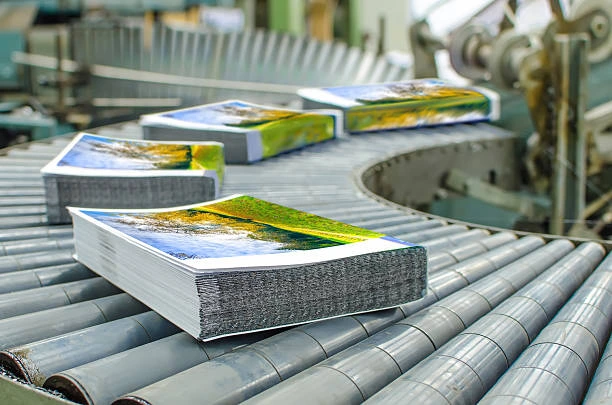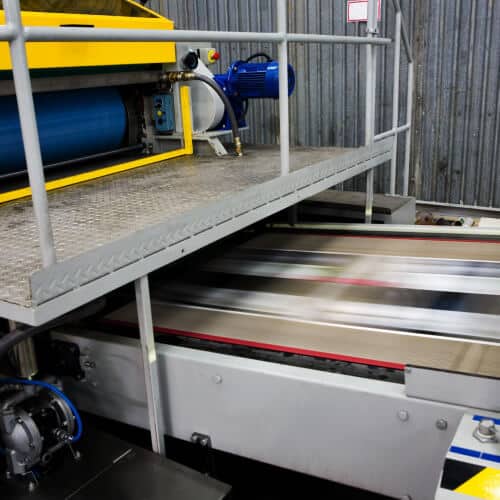The Vital Guide to Recognizing Litho Printing and Its Applications
Litho printing stands as a significant method in the printing sector, rooted in the concepts of oil and water repulsion. This strategy not just delivers high-quality pictures but additionally provides to numerous business demands. Its applications range from advertising materials to product packaging, showcasing its versatility. As the industry adapts to new modern technologies, the advancement of litho printing questions about its future and importance in an electronic landscape. What lies in advance for this sustaining method?

What Is Litho Printing?
Litho printing, a widely utilized printing technique, relies on the principle of oil and water repulsion. This technique employs a flat printing surface area, normally a steel plate, which is dealt with to assure that the photo locations are receptive to oil-based inks while the non-image locations repel them. The procedure begins with the development of a picture on home plate, typically through illustration or photo methods. Once the image is prepared, the plate is dampened with water, followed by the application of ink. The ink sticks only to the photo locations, permitting for exact recreation of graphics and message. Litho printing is preferred for its capability to create top notch prints with great detail and vibrant colors. It is frequently used in commercial applications, including papers, magazines, and product packaging, showcasing its convenience and efficiency in fulfilling the needs of contemporary printing.
The History of Lithography
Although lithography is a contemporary printing staple, its origins map back to the late 18th century when German playwright Alois Senefelder invented the method in 1796. At first created as a method for recreating messages and photos, lithography utilized a flat stone surface to produce prints via a chemical procedure. Senefelder's innovation permitted greater adaptability and creative expression compared to previous printing methods.By the 19th century, lithography obtained extensive approval, becoming a preferred option among artists and publishers. It allowed the mass production of illustrations, maps, and posters, notably affecting the printing market. The technique further evolved with the intro of lithographic presses, boosting effectiveness and quality.As the industrial transformation progressed, lithography adjusted to fulfill the needs of commercial printing, paving the method for modern-day applications. Today, it stays an essential technique in numerous industries, including posting, packaging, and great art recreation.
Just How Litho Printing Works
A vital attribute of litho printing is its dependence on the concept of oil and water repulsion - litho printing. In this procedure, images are moved from a flat surface area, usually a steel or polymer plate, to paper. Home plate is treated so that the areas intended for printing bring in ink, while the non-image areas repel it due to their affinity for water. The printing starts by wetting home plate with water, which sticks to the non-image locations. Ultimately, an oil-based ink is applied, sticking only to the desired picture areas.When home plate comes into contact with the substratum, the ink is transferred, developing a print. The litho printing procedure can generating premium images with great detail. It is typically made use of for automation because of its performance and consistency, making it a preferred technique for business printing applications
Advantages of Litho Printing
One significant benefit of litho printing is its capability to create top quality images consistently, making it a perfect option for business projects. This printing approach makes use of a flat printing plate, making certain also ink circulation and sharp information. Litho printing is also renowned for its color accuracy, making it possible for vibrant and true-to-life reproductions, which is important for branding materials.Moreover, it supports a vast variety of substratums, consisting of paper, cardboard, and also certain plastics, enhancing its versatility. The procedure is cost-effective for large runs, as economic climates of range decrease per-unit expenses. In addition, litho printing has a quick turn-around time, enabling effective production schedules.Its longevity likewise implies that published materials resist fading, making sure that the last item keeps its aesthetic charm gradually. Generally, these benefits make litho publishing a recommended choice across different markets, contributing to its enduring appeal.
Applications of Litho Printing in Organization
As companies increasingly look for trusted and high-grade printing solutions, litho printing becomes a principal in various applications. This method is specifically favored for producing advertising and marketing products such as pamphlets, flyers, and catalogs, many thanks to its capability to supply dynamic shades and sharp photos. On top of that, litho printing is often utilized for packaging remedies, enabling firms to create attractive tags and boxes that improve product appeal.In the field of company identification, litho printing is important in creating professional stationery, calling card, and promotional goods, which assist strengthen brand name acknowledgment. Furthermore, it is commonly made use of in the publishing market for published products such as publications and magazines, where consistent top quality is vital. In general, litho printing's adaptability and effectiveness make it an important device for companies aiming to communicate effectively and establish a solid market existence.
Artistic Use Litho Printing
Litho printing offers as a functional tool in the domain of printmaking, offering artists an unique technique to share their creativity. This method permits a vast array of artistic applications, from typical prints to contemporary analyses. By discovering the subtleties of litho printing, artists can harness its distinct high qualities to enhance their work.

Printmaking Techniques Overview
The creativity of printmaking includes a varied series of strategies, with litho printing sticking out for its unique strategy to photo production. This method relies upon the principle of oil and water repulsion, allowing artists to draw directly onto a limestone or metal plate with a greasy tool. Once prepared, home plate is moistened and inked, moving the photo onto paper through stress. Litho printing is commemorated for its capacity click to generate great details and abundant tonal variations, making it a favored selection amongst musicians. In addition, the process is versatile, accommodating both typical techniques and modern-day adaptations. This flexibility permits litho printing to bridge various artistic styles, improving the printmaking landscape with its distinct qualities and capacities.
One-of-a-kind Artistic Applications
Exploring the distinct imaginative applications of litho printing discloses its remarkable versatility in various innovative areas. Musicians utilize litho printing to produce detailed designs and appearances, enabling meaningful and comprehensive works. The procedure facilitates the reproduction of vibrant shades, making it perfect for illustrations and great art prints. Many modern artists accept lithography for its ability to incorporate traditional techniques with contemporary concepts, resulting in ingenious artwork. In addition, litho printing is commonly utilized in the production of limited version prints, improving their value and allure. The tactile top quality of litho prints includes an unique measurement, attracting collectors and art lovers alike. Overall, litho printing continues to be a significant medium for imaginative expression, bridging timeless techniques with contemporary creativity.
The Future of Litho Printing in a Digital World
As the printing sector evolves, litho printing encounters the obstacle of incorporating digital innovations to stay pertinent. Techniques concentrated on digital assimilation, alongside fads in sustainability and technology, will certainly form its future - litho printing. Recognizing these dynamics is vital for industry stakeholders wanting to adjust to a quickly altering landscape
Digital Combination Approaches
An expanding variety of litho printing business are welcoming digital assimilation strategies to stay affordable in an increasingly digital landscape. By including electronic workflows, these firms can enhance procedures and enhance performance. This combination permits real-time information management and enhanced communication in between divisions, minimizing turn-around times noticeably. Furthermore, electronic tools make it possible for much better modification and customization of printed products, satisfying particular customer needs. Firms are see this page likewise taking on crossbreed printing options that combine standard litho methods with digital modern technologies, supplying flexibility in manufacturing. Furthermore, leveraging information analytics assists in recognizing market trends and customer preferences, permitting organizations to make informed choices. On the whole, electronic assimilation is coming to be vital for litho printing firms intending to innovate and respond to developing market requirements.
Sustainability and Development Patterns

Frequently Asked Questions
What Products Are Frequently Made Use Of in Litho Printing?
The products frequently used in litho printing include aluminum plates, ink, water, and paper. Each component plays a crucial role in the printing procedure, making sure high-grade image recreation and efficient transfer of ink onto the substratum.
Exactly How Does Litho Printing Contrast to Digital Printing?
Litho printing uses remarkable color consistency and quality for large runs, while electronic printing masters brief runs and personalization. Each method has distinctive advantages, satisfying different needs based upon manufacturing range and cost-efficiency.
What Is the Regular Turnaround Time for Litho Printing Projects?
The typical turn-around time for litho printing projects differs, normally ranging from a few days to a number of weeks. Factors affecting this timeframe include job intricacy, quantity, and required ending up processes, influencing overall manufacturing routines.
Can Litho Printing Accommodate Custom Sizes and Formats?
Litho printing can without a doubt accommodate customized dimensions and styles, permitting for versatility in design. This adaptability makes it possible for customers to attain distinct print results customized to their particular requirements, improving the overall effectiveness of their projects.
What Are the Environmental Influences of Litho Printing?
The ecological effects of litho printing include resource consumption, chemical use, and waste generation. Innovations in lasting techniques and environmentally friendly materials are gradually lowering these negative impacts, advertising like it a much more eco responsible technique to printing.